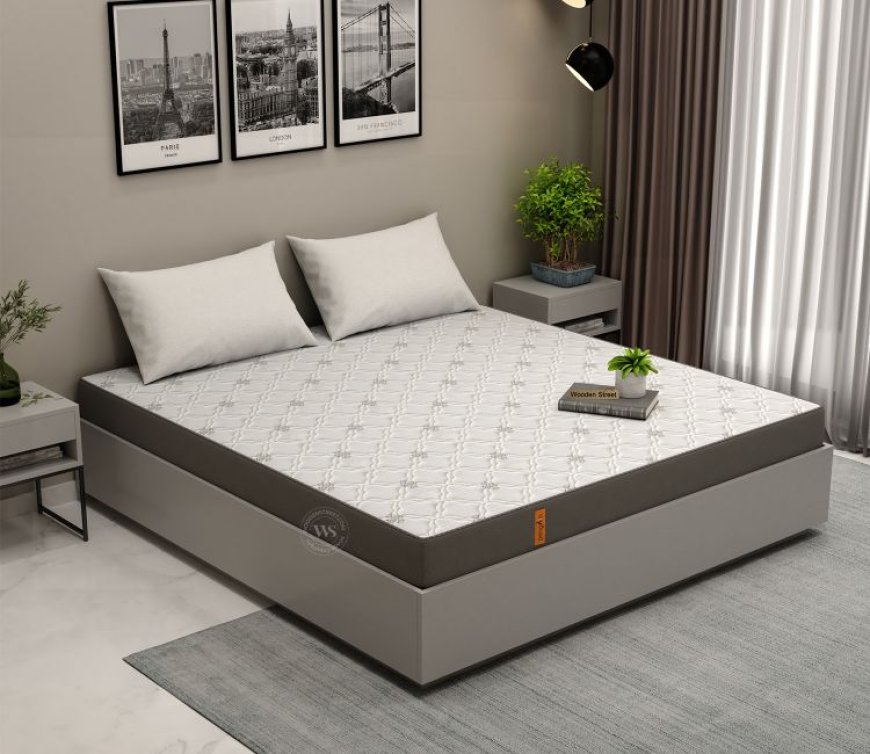Choosing the right mattress for children and teens is crucial for their overall health, development, and sleep quality. As they grow, their bodies undergo significant changes, and a mattress that provides proper support can help ensure that they get the restful sleep they need. With so many options available in the market, it can be challenging to know where to start. Here's a guide on how to choose the perfect mattress for your child or teen.
1. Consider the Age and Size of Your Child or Teen
The first factor to consider when choosing a mattress is the age and size of the child. For younger children, a mattress that offers more firmness is ideal, as their growing bodies need more support. A firmer mattress will help maintain proper spinal alignment and provide a solid foundation for sleep. As children grow into their teenage years, they may start preferring a softer mattress or a medium-firm option, as their sleep preferences and body structure change.
For children, a twin-size mattress is usually a good fit, while older teens might prefer a full or queen-size mattress, depending on their height and comfort preferences. Keep in mind that purchasing a mattress that will last as your child grows can be a wise investment, but it’s also important to ensure it offers the proper support for their current size and needs.
2. Prioritize Comfort and Support
Comfort and support are two of the most critical aspects when choosing a mattress for children and teens. A mattress that is too soft may cause poor posture and discomfort, while one that is too firm might lead to pressure points. It’s important to find a balance between these two elements.
Look for mattresses with a medium-firm feel for children and a medium to medium-soft feel for teens. This will provide the necessary spinal support without compromising comfort. You can also explore mattresses that feature multiple layers of foam or pocketed coils for enhanced support. Additionally, consider mattresses with natural or hypoallergenic materials to help reduce allergies and ensure a healthier sleep environment.
3. Pay Attention to Durability
Children and teens are typically more active on their mattresses, which can lead to wear and tear over time. You want a mattress that is durable and will last for several years. Opt for a high-quality mattress made with sturdy materials, such as high-density foam or steel coils.
A mattress with a good warranty is also a wise choice. This ensures that if the mattress starts to sag or lose support, you can get it replaced or repaired. Keep in mind that mattresses for children and teens will need to be replaced after a few years of use due to normal wear and tear.
4. Choose a Mattress that Suits Sleeping Position
Understanding your child's or teen’s preferred sleeping position is crucial when selecting the right mattress. A child or teen who sleeps on their side may need a mattress that provides more contouring and cushioning to support their shoulders and hips. For those who sleep on their back or stomach, a firmer mattress is ideal to help maintain spinal alignment.
If your child or teen tends to shift positions throughout the night, a medium-firm hybrid mattress with a mix of foam and coils can provide balanced support and comfort for all sleeping positions.
5. Consider Special Features and Materials
As children and teens tend to sweat more during sleep, consider a mattress with cooling features to keep them comfortable. Look for materials that promote breathability, such as gel-infused memory foam or hybrid mattresses with breathable covers. These will help regulate temperature and provide a more comfortable sleep environment.
If your child or teen suffers from allergies, consider hypoallergenic options. Some mattresses come with antimicrobial covers that resist dust mites, mold, and other allergens, helping to improve air quality and reduce the likelihood of allergic reactions.
6. Think About the Budget
While you want to invest in a high-quality mattress, it’s important to keep your budget in mind. Prices for mattresses can vary significantly depending on the material, size, and brand. However, it’s essential not to compromise on quality for the sake of price, especially when it comes to something as important as sleep.
Look for sales, promotions, and online discounts to find a mattress that fits your budget without sacrificing quality. A good mattress is an investment in your child's or teen’s health and well-being, so it’s worth spending a little more for long-term comfort and durability.
7. Try Before You Buy
Whenever possible, encourage your child or teen to test out mattresses in a store. This will give them the opportunity to feel the different firmness levels and materials to see what feels best. Many mattress retailers also offer trial periods, allowing you to test the mattress in your own home and return it if it doesn’t meet your expectations.
Conclusion
Choosing the right mattress for children and teens is crucial to ensure they get quality sleep that supports their growth and development. By considering factors like age, size, comfort, durability, and budget, you can find a mattress that provides the right level of support and comfort. For long-lasting comfort and excellent support, a memory foam mattress is an excellent option. It offers great contouring support, relieves pressure points, and helps maintain spinal alignment, making it an ideal choice for children and teens alike


























